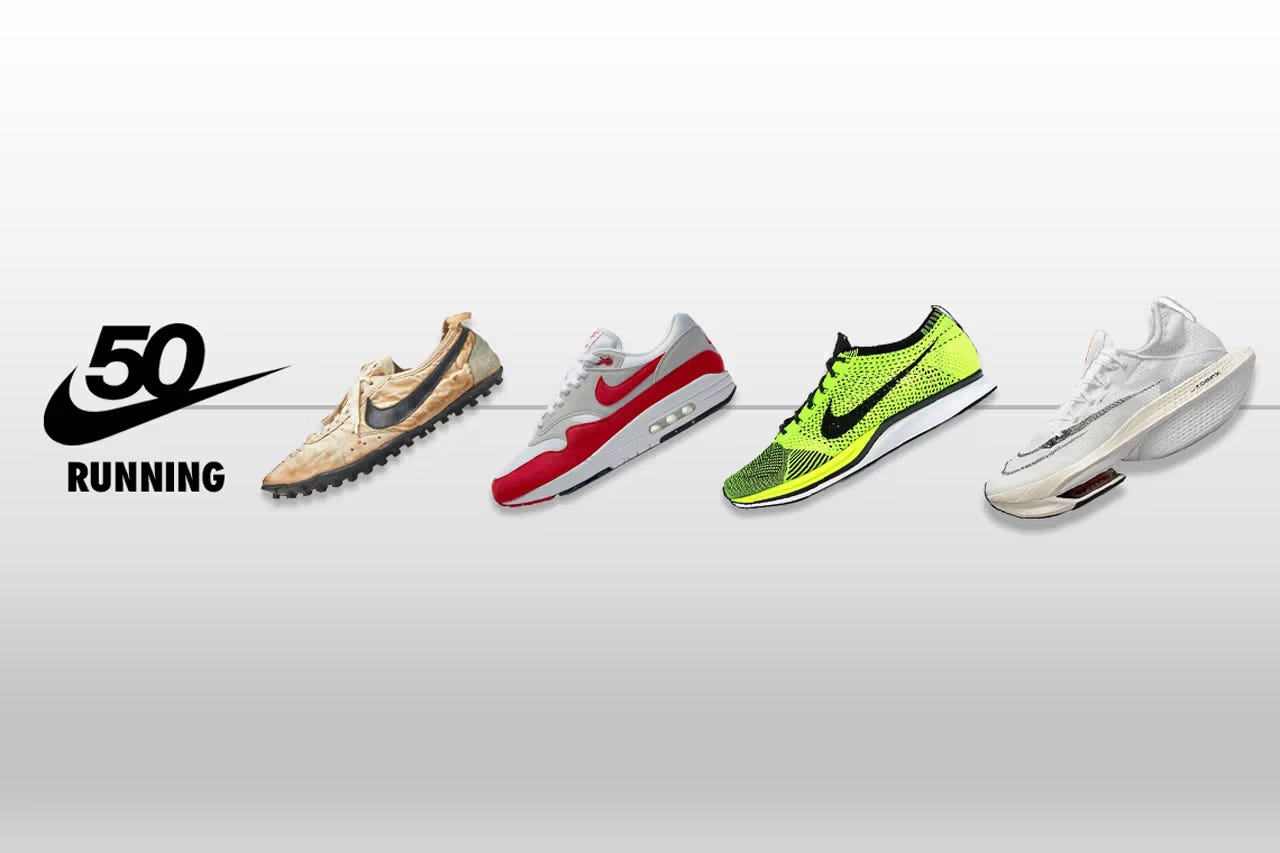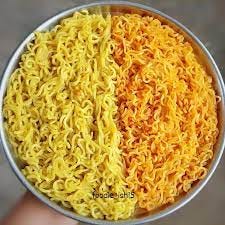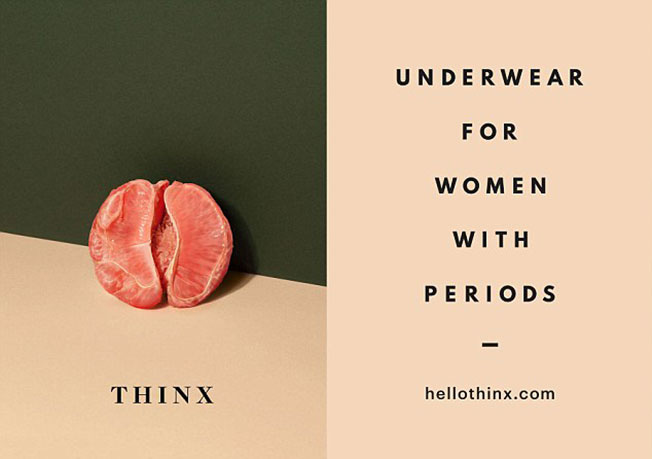In the previous edition, I shared a theory by HBR and Intel’s Andy Grove that to break inertia, a tech product should be at least 10x better than the current choice.
We know that, in general, consumer products don’t have the technology to deliver 10x better benefits.
So what should they do?
I share an original framework to help construct inertia-busting strategies.

The Old-New Axis: Even if we are not as obsessive-compulsive about our cup of tea as Leonard’s mom is, we are creatures of habit. That’s why, unless given an offer we can’t refuse, we tend to stay with the brands we buy. That’s how most old brands fall into an automatic buying loop, which they mistakenly read as loyalty. They need to induce active choice for their brand over passive acceptance. New brands have an equally tough task. They must shake consumers out of their lazy inertia to try something new.
The Build-Borrow Axis: Our energy-efficient brain latches onto anything familiar, like leeches drawn to blood. But it also gets excited when it spots something new. Old and new brands can leverage this by smartly blending the new and the old.
The New Old: L’Oreal, Nike
L’Oreal Excellence Hair Color has a technology pipeline that ensures its hair color is relaunched every 2-3 years.
Better conditioner, better benefits in the colorant, adding a shampoo, better graphics on the pack, better gloves, even a better applicator… no detail is off-limits.
I worked on the brand in 1999 and relaunched the product with a better conditioning shampoo. Every few years since, the product has been upgraded without fail.

A L’Oreal Excellence Hair color kit. Source: Google Search
This assures consumers that their product continues to offer them the latest technology in hair color and care and makes them actively loyal to the brand. This is my absolute favorite inertia-busting strategy, but it is also the most underused. In my experience, instead of making best-sellers even better, most companies indulge in shrinkflation.
Another admirable brand that keeps refreshing itself is Nike. From the 1972 “Moon Shoe” to the 2024 “Air Max Dn,” Nike makes shoes like Musk builds rockets.


Air Max Dn debuts Mar’24 Source
But unlike L’Oreal, Nike does not just stop with product refresh. Nike stays anchored to the spirit of “just do it”, but invests disproportionately in culture-bending advertising campaigns. Its hard-hitting, contemporary campaigns live rent-free in consumers’ minds and contribute to making it an active choice each time we want to buy sports.
The Old Reimagined: Pulse candy, Paperboat
Comfortable habit is a form of inertia. Some brands become habits because they serve us benefits that are ingrained into not just our daily routine but into our culture itself, for example, tastes and fragrances.
Tastes are so hardcoded into our psyches, and they carry deep emotional meaning and memories – experts call such tastes imprinting tastes. Think of traditional and indigenous tastes like aam panna, kaala khatta, Jaljeera, or aam ras.
And that’s why building food brands is incredibly challenging anywhere.
Therein lies an opportunity that traditional tastes may be time-consuming to prepare or not readily available in a hygienic form. That’s an entryway for new brands.
Pulse Candy and Paperboat recreated these very flavors in modern, convenient formats and managed to pierce inertia.

Source: Google Search
The New from Old: Yorkshire tea, Coke+Popcorn
Yorkshire tea reinvented the choice of tea by connecting it to ‘British Propriety’: Changing our tea habit is probably the toughest challenge for a new brand.
Yorkshire tea was the third brand behind Tetley and PG Tips in the UK. A product superiority claim would not have worked because we cannot rationally describe how one cup of tea is superior to another.
So Yorkshire decided to appeal to the oldest part of the consumer, their lizard brain. Yorkshire’s already had a very ‘British’ product promise, “we do things proper” (they made their tea ‘the proper way’ by sourcing only the best tea leaves from Kenya).
They extended this product promise to an emotional promise that appealed to the population’s sense of local pride.
With typical British humor, their advertising featured Yorkshire’s celebrities performing jobs around the factory and office. This emotional message did not just invite a chuckle, it also broke the habit loop and made Yorkshire the No.2 brand.
Coca-Cola and popcorn: We can’t imagine watching a movie without popcorn. And we can’t imagine popcorn without a chilled glass of Coke to wash it down with. Coca-Cola has mastered the art of connecting Coke with existing habits. Think of this next time you order a combo meal — Coke with Biryani, Coke with Burger, Coke with Fried Chicken.
And that’s how connecting the new to the old breaks inertia and embeds new brand habits deeper.
The New New: Yippie Noodles, Sebamed, Thinx, Nescafe Japan
Sometimes, the best strategy for new brands is to disrupt the status quo. And there are many examples of this. I share four.
Yippie noodles are tangibly different from Maggi noodles. Yippie Noodles designed its mix to be the opposite of Maggi. They were the opposite on features that may not even have mattered to the consumer. Until Yippe made sure they did.
Maggi cake is square. Yippie is round.
Maggi noodle color is yellow. Yippie is orange.
And if that wasn’t enough, Yippie identified a feature of Maggi and converted it into a bug. Maggi noodles tend to get sticky when left out for long. Yippie designed its noodles to be long and non-sticky.
Maggi advertising targets moms. Yippie advertising targets tweens.
When Yippie launched, Maggi had a dominant share. Today, Yippie is a strong no.2.

Seba Med challenged established soap brands using a pH claim. Sebamed is a medical soap with a 5.5 pH. This pH is considered to be the safest for the skin. It called out the chink in Hindustan Unilever’s soap brands (love marks like Lux and Dove) – that their pH was higher, so unsafe for the skin. This got a lot of attention and forced consumers to break out of their inertia and consider Sebamed.

Thinx shocked people into noticing it: Thinx is not just a disruptive product. It made sure that it did not go unnoticed through its bold advertising, that too, in busy subway stations.

Thinx advertising, Source: Google Search
Finally, here is another one of my favorite strategies.
In this age of race to unicorn valuations, this is the most challenging strategy to stick with – the strategy to build new habits from scratch. It’s challenging because it takes managerial maturity to plant trees whose shade they will never sit in.
It’s not surprising that this strategy came out of Japan.
Nestle Japan switched a deeply entrenched tea habit to make Japan one of the largest coffee-drinking nations in the world. In the 1970s, Japan was a country exclusively of tea drinkers. Tea was a habit and a part of culture [tea ceremony].
All attempts to launch the coffee business in Japan kept failing.
So, Nestlé sought the help of Clotaire Rapaille– a French marketing consultant. Clotaire Rapaille concluded there was no chance of success because the Japanese palate had no early experience, hence no memory of the coffee taste [read: coffee was not an imprinting taste].
Rapaille’s declaration was explicit – Japan would never accept coffee as a beverage unless the flavor was ‘imprinted’ onto the palate early on.
Nestlé accepted the challenge and painstakingly started imprinting the coffee flavor amongst young Japanese consumers – they launched caffeine-free coffee-flavored chocolates and candy in schools and colleges. The young generation grew up with an acquired taste for coffee. Today, Nestlé dominates the coffee market in Japan.
All inertia-breaking strategies combine the new and the old in interesting and insightful ways. But we can only blend ideas new ways when we stop taking consumers at face value and start letting our imagination run free. What do you think?
Thanks for reading!
